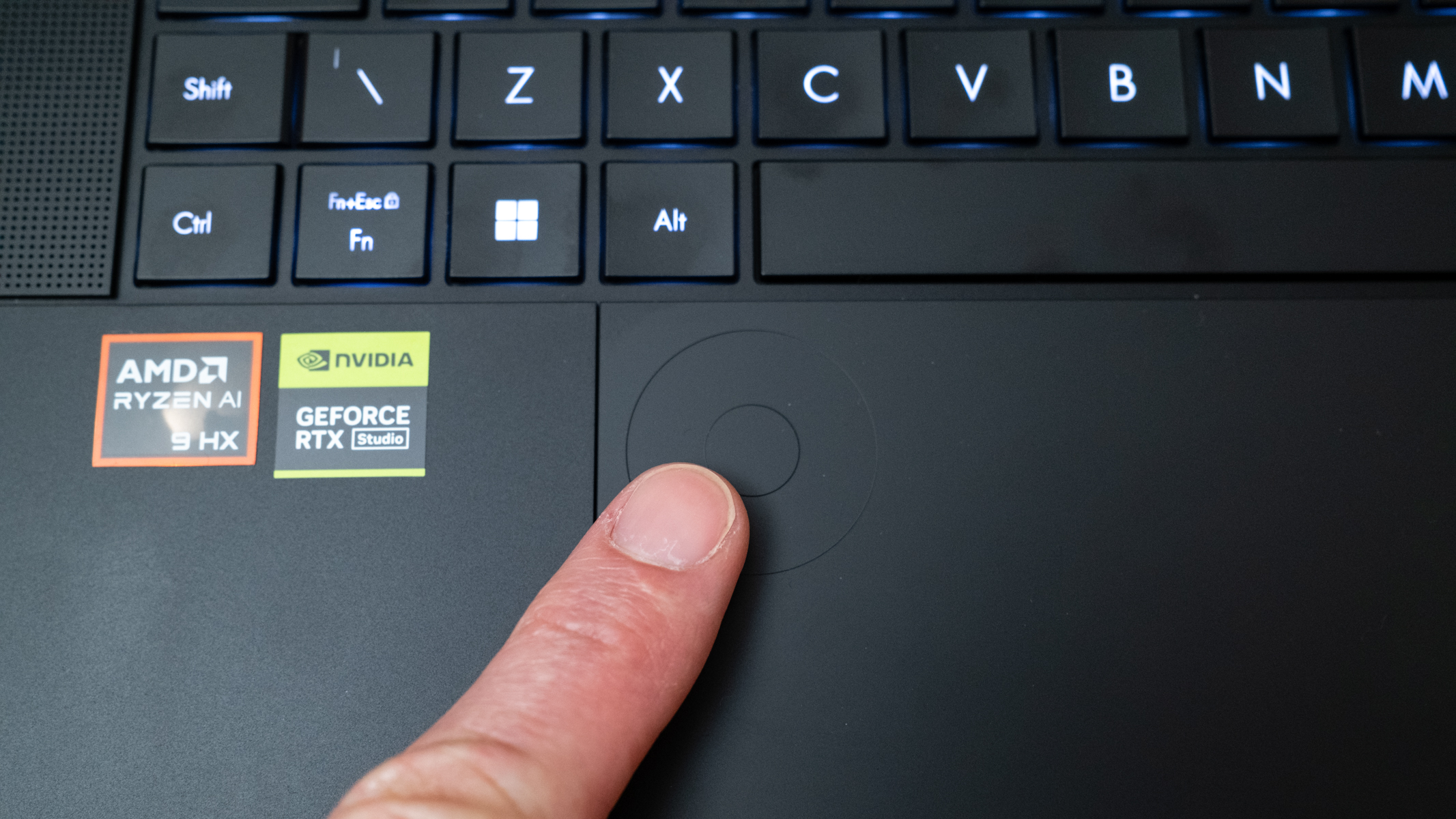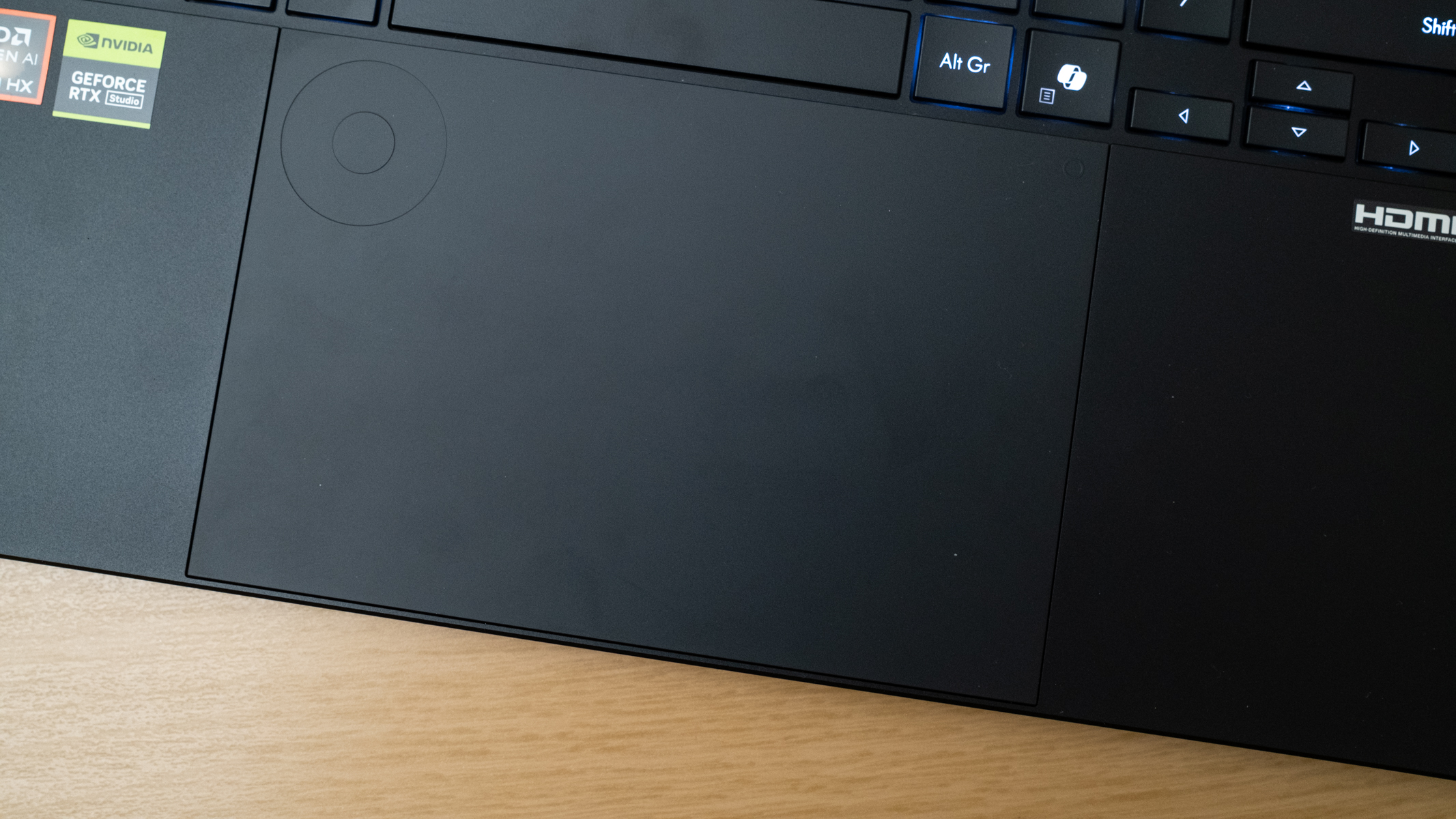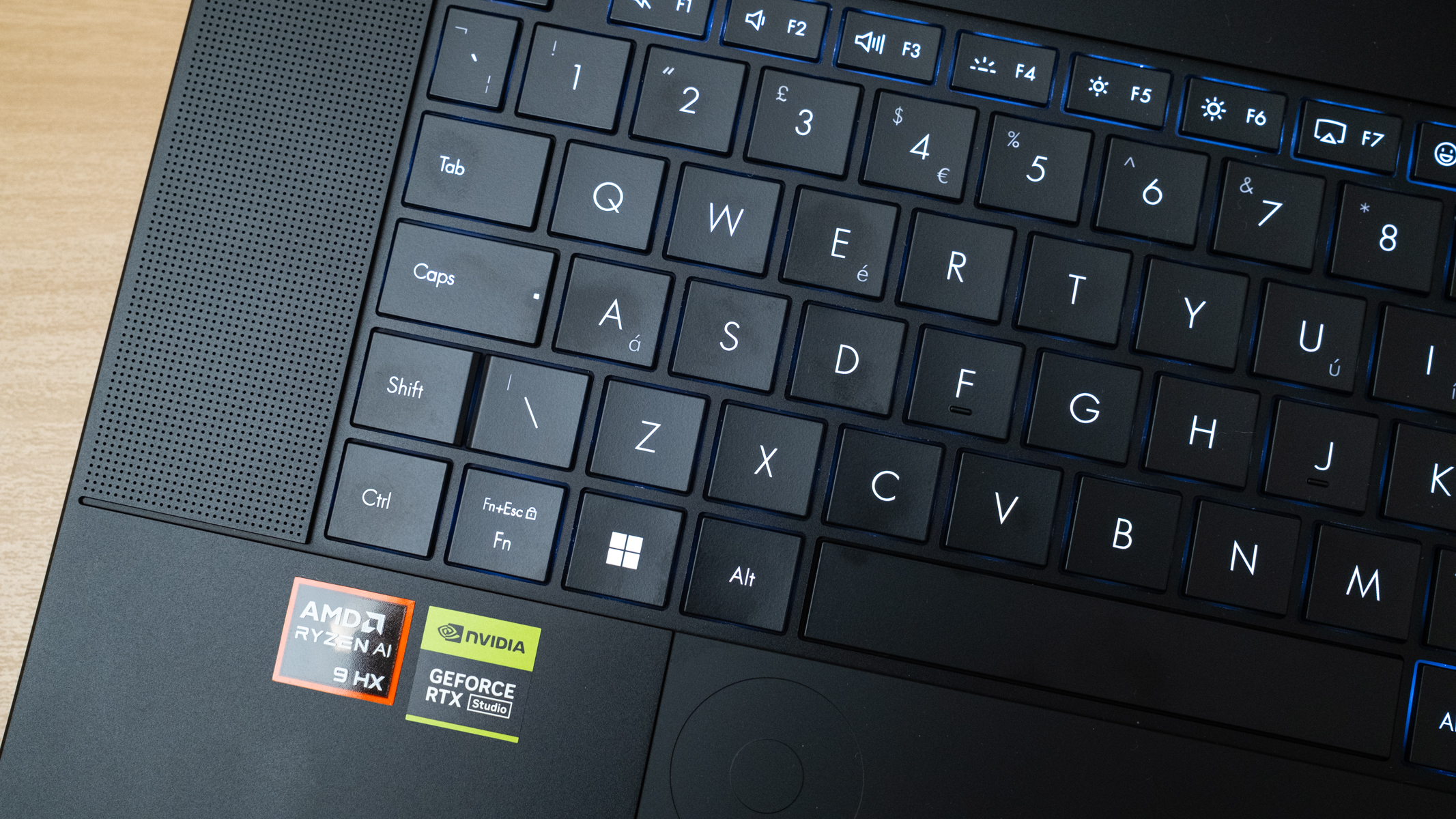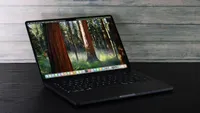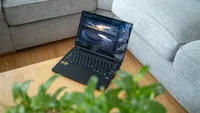Digital Camera World Verdict
The Asus ProArt P16 is, like its predecessors, an incredibly high-performance notebook with desktop-level performance. This makes it a great solution for photographers, videographers and designers. This model uses the same powerful processor as the previous two models, with the Nvidia GTX 5090 graphics card being the main upgrade. The ProArt P16 remains an excellent choice for creatives, but it’s one of the more expensive Windows notebooks available.
Pros
- +
Excellent OLED touchscreen
- +
Desktop-level performance
- +
Asus Dial delivers additional control
Cons
- -
It’s expensive
- -
The glossy screen is reflective
- -
Same processor as the previous two models
Why you can trust Digital Camera World
There was a time when people suggested that tablets would wipe the floor with notebooks, but that unsurprisingly didn’t happen. Creatives need processing power to run photo and video editing software smoothly. The Asus ProArt P16 2025 is the latest upgrade to the product line, delivering familiar processing power alongside a new and more powerful graphics card.
The design, build and specs remain pretty much the same as previous models, but it’s still one of the best laptops for photo editing by far. This is a notebook with desktop-level performance, meaning you can have one device for every situation. But most importantly, you get a notebook that can tackle the most demanding tasks wherever you are.
The ProArt P16 is crafted to a high specification with its tough all-metal body. The screen is a wide-gamut HDR 4K OLED touchscreen, which produces crisp and vibrant images, while the Asus Dial on the touchpad delivers tactile control of some features of creative software. This is just the tip of the iceberg, but with all this and more, it’s an expensive laptop.
I’ve reviewed several ProArt P16 notebooks, and all three, including this one, use the same AMD Ryzen processor. The design and features remain the same for each, while it’s the discreet Nvidia GPU that sees the most significant upgrade. The model tested is the most powerful available.
Asus ProArt P16 H7606WX: Specifications
CPU | AMD Ryzen AI 9 HX 370 2.0GHz (up to 5.1GHz, 12 cores, 24 Threads, AI up to 50 TOPs) |
Graphics | RTX 5090 24GB GDDR7 & AMD Radeon 890M (integrated) |
RAM | 64GB LPDDR5X |
Screen | 16-inch, 4K (3840x2400) OLED touchscreen 120Hz |
Storage | 2TB M.2 NVMe 4.0 SSD |
Ports | 2x USB-A, 2x USB-C, 1x HDMI, 1x DC-in, 1x 3.5mm Combo Audio Jack, SD card reader |
Wireless | Wi-Fi 7, Bluetooth 5.4 |
Camera | FHD webcam / Windows Hello |
Weight | 1.95kg / 4.30lbs |
Dimensions | 35.5 x 24.7 x 1.5 ~ 1.83cm / 13.97x 9.72x 0.59 ~ 0.72 inches |
Asus ProArt P16 H7606WX: Price
The Asus ProArt P16 H7606WX is the most expensive ProArt model available, with an eye-watering price of $3999 / £4800. This is a huge amount of money, but it is priced as you’d expect for a high-end notebook with the level of hardware on offer and the excellent build quality. What’s more, it’s priced similarly to equally powerful notebooks.
This notebook is almost identical to previous models, but we did test the most powerful model available, so all the hardware was maxed out, including the GTX 5090 discrete graphics card. The processor used is the same as the previous two P16 models.
Asus ProArt P16 H7606WX: Design & Handling
The ProArt P16 is a 16-inch laptop, so its footprint is quite large despite its svelte thickness, which is a slight wedge shape. This version of the laptop is 100g / 3.53oz and marginally thicker than the previous model at the rear of the notebook. The total weight of the notebook is 1.95kg / 4.30lbs. The ProArt otherwise looks the same as previous models and includes much of the same hardware.
The best camera deals, reviews, product advice, and unmissable photography news, direct to your inbox!
If it ain't broke, don’t fix it springs to mind here, and this version looks every bit as good as the last. This is thanks to the all-aluminium chassis in textured nano black, which includes the outer shell and the keyboard bed. Rigidity remains excellent, but as before, the black finish is a fingerprint and smudge magnet despite claims to the contrary.
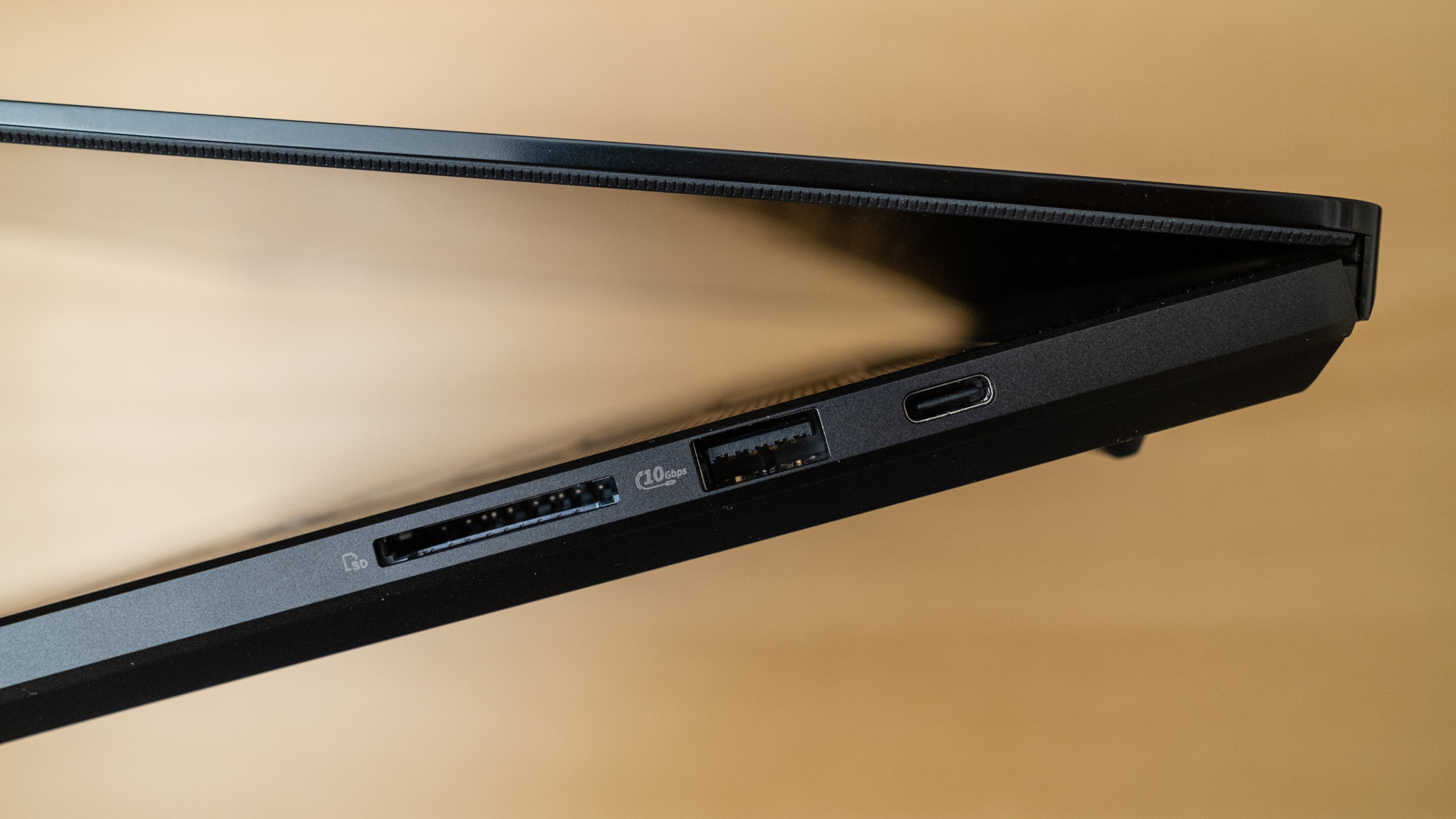

Build quality is excellent overall, and the ProArt looks and feels like the premium product it is. Asus claims the P16 exceeds the MIL-STD 810H military standard for durability and says it has been tested for sand, dust and humidity resistance, up to 95% relative humidity. As always, I didn’t put this to the test because it would mean damaging the review unit, so this claim is hopefully true. It does mean that the laptop can, in theory, be used in almost any location.
As a notebook aimed at creatives, there’s the Asus Dial situated on the trackpad. This provides a level of control similar to control consoles. The Asus Dial can be configured with the desired functions, but these are limited to a list of options rather than allowing you to assign any control you wish. What’s available is useful, and it’s a useful feature overall. The Dial can also be switched on and off as required, so it doesn’t get in the way when you don’t need it.
When it comes to connectivity, there are 2x USB-C, 2x USB-A, 1x HDMI, 1x DC-in, 1x 3.5mm Combo Audio Jack and an SD card reader on the sides of the notebook. This is a great level of physical connectivity which allows you to connect the accessories you need, whether external drives, input devices or a monitor, for example.
The speakers also produce great sound quality for a laptop, but they’re unsurprisingly not as good as larger external speakers. That said, most people will use the built-in speakers when on the move, and they are undoubtedly clear enough for video editing with sound.
Asus ProArt P16 H7606WX: Performance
The 16-inch, 4K (3840x2400) OLED touchscreen has a refresh rate of 120Hz with 10-bit color and produces up to 400-nits of brightness. The glossy display is lovely and bright, making it a pleasure to use for photo and video editing, but it does pick up reflections in some situations. Being touchscreen, you can use your fingers to control the pointer or use the Asus Pen, available separately, for more control.
The screen is sharp and packed with fine detail – it’s a pleasure to use, and the large size is so much better than 13-inch notebooks. Blacks are deep while colours are realistic. Asus claims the ProArt P16 can display 100% of the P3 colour space, and when calibrated using a Spyder X Pro, it was able to display 99% P3, 95% Adobe RGB 1998 and 100% sRGB. This is excellent for a notebook and makes the ProArt ideal for color-critical workflows.
This latest ProArt model uses the same processor as the previous two models, which is the AMD Ryzen AI 9 HX 370 2.0GHz, with AI-enhanced efficiency when using AI-powered software features. It’s a fantastic processor and helps to create an incredibly smooth experience when working with demanding applications. Then there’s 64GB of DDR5 RAM, a 2TB SSD and an Nvidia GeForce RTX 4090 24GB GDDR7.
This GPU is fantastic for all creative software, but is perfect for video editing in particular. The 50 series GPUs not only support 4:2:0 chroma sampling in H.264 and H.265 video, but they also can encode and decode 4:2:2 chroma-sampled video with 8-bit and 10-bit video output available. A powerful graphics card is also essential for software such as Adobe Premiere and Davinci Resolve.
I predominantly tested the ProArt with Adobe Photoshop, Lightroom and Davinci Resolve, and it handled every task incredibly well. I also installed Steam and ran a few demanding games to see how well it handles these, and it didn’t miss a beat. The 120Hz refresh rate is also a great new improvement if you intend to use the ProArt for gaming.
To test performance, CineBench and Geekbench were installed, and the laptop was plugged into the mains during testing. When tested with Cinebench, the Single Core score was 116, which is 1st place on the ranking list for performance. With Multi-Core, it scored 1130, which is 4th place on the list. Turning to Geekbench, the Single Core score was 15343, Multi-Core was 2880 and the GPU came in at 181521.
The ProArt does come with a ton of bloatware aimed at creatives, and whether or not it’s useful to you will be a matter of personal opinion and choice. You get Storycube for managing digital assets, ProArt Creator Hub for controlling settings and performance and MuseTree for AI image generation that’s presented in a tree format. For me, ProArt Creator Hub is the most useful software bundled on the ProArt.
Asus ProArt P16 H7606WX: Verdict
The Asus ProArt P16 is, like its predecessors, an incredibly high-performance notebook with desktop-level performance. This makes it a great solution for photographers, videographers and designers. This model uses the same powerful processor as the previous two models, with the Nvidia GTX 5090 graphics card being the main upgrade. The ProArt P16 remains an excellent choice for creatives, but it’s one of the more expensive Windows notebooks available.
This notebook is an absolute powerhouse with incredible hardware specs, making it an amazing option for creatives. This all comes at considerable cost, although pricing is similar to competitor notebooks with similarly high specs. For this desktop-level performer, you’ll have to dig deep for the $3999 / £4800 price tag. But, if you can afford and justify it, you won’t be disappointed.
Features ★★★★★ | Excellent features for creative users. |
Design ★★★★★ | Fantastic build quality with a pleasing design. |
Performance ★★★★★ | Great performance overall with impressive hardware |
Value ★★★★☆ | The ProArt P16 is priced correctly, but it’s expensive. |

✅ Buy it...
- If you need desktop performance and portability.
- If you want a powerful Windows laptop for creative use.
🚫 Don't buy it...
- If you're on a budget, less powerful laptops are cheaper.
- You don’t use a computer for hardware-intensive tasks.
Alternatives
The Apple MacBook Pro 14 (M4 Pro, 2024) base model is available for less than the ProArt P16, but you will be paying just as much for RAM and storage upgrades if you prefer Apple.
The Asus ProArt PX13 is a smaller convertible notebook than the ProArt P16, offering tablet functionality, which can expand the usefulness of the devices. It’s also less expensive.
James Abbott is a landscape and portrait photographer based in Cambridge. He’s also an experienced photography journalist specializing in camera skills and Photoshop techniques. He is also a CAA-approved drone pilot and professional aerial photographer.
You must confirm your public display name before commenting
Please logout and then login again, you will then be prompted to enter your display name.



